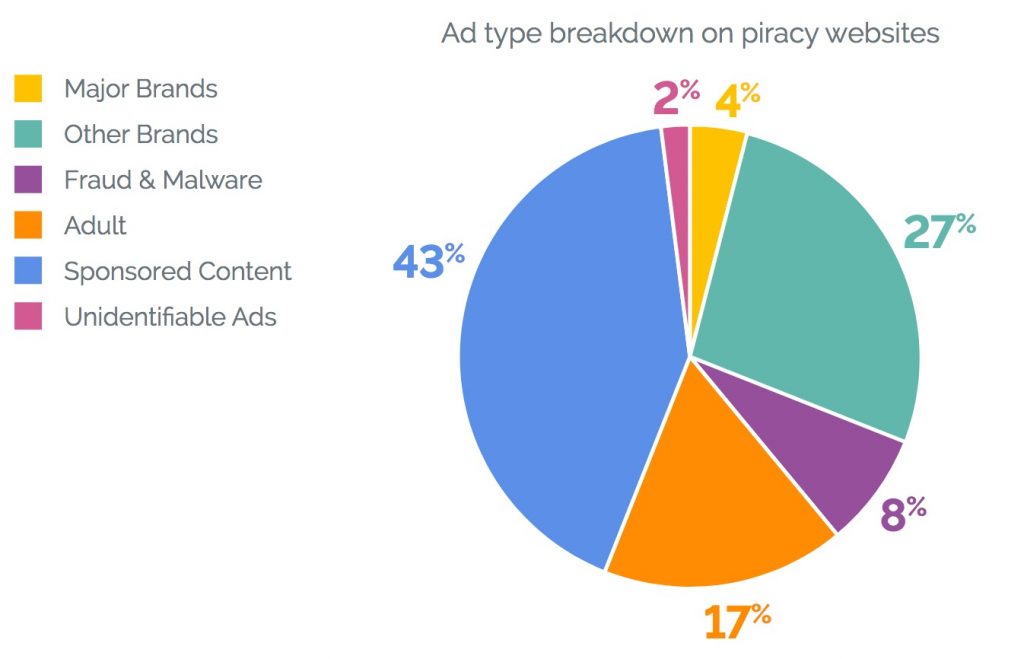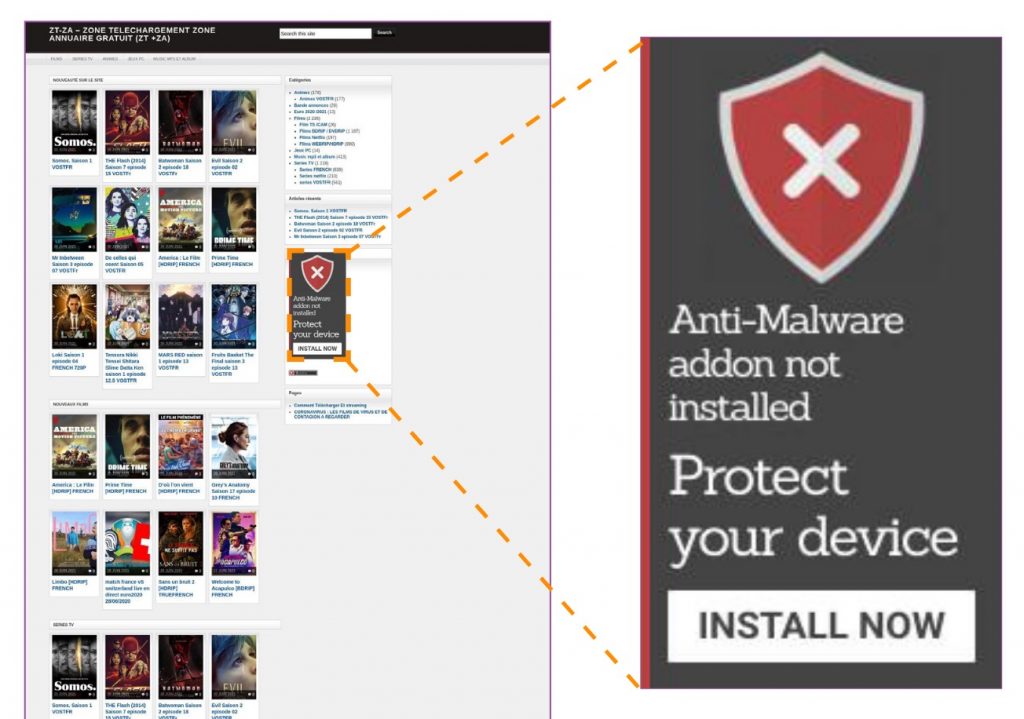 A report published by Digital Citizens Alliance (DCA), using measurement data from White Bullet Solutions during the period from June 2020 through May 2021, finds that revenue to pirates from stolen advertising placed on pirate streaming apps and Web sites may represent the majority of all media piracy revenue.
A report published by Digital Citizens Alliance (DCA), using measurement data from White Bullet Solutions during the period from June 2020 through May 2021, finds that revenue to pirates from stolen advertising placed on pirate streaming apps and Web sites may represent the majority of all media piracy revenue.
73% of this stolen advertising went through Amazon (found on 41% of all piracy apps studied), Facebook (27%) and Google (5%). Amazon was credited with putting intelligent countermeasures in place to detect and mitigate the problem, as there was a 57 percent decrease in Amazon advertising showing up on these apps from January 2021.
Google seems to have a key role
According to the report, Google’s content delivery network appears to have been used to place 38 percent of all ads on piracy apps. The company’s ad brokering services appear to have been used in facilitating 13 percent of pirate ad placements. Google was among the leading advertisers on piracy apps – for Google’s own products and services – accounting for five percent of all Major Brand advertising; potentially accounting for millions of dollars paid to pirates.
Other highlights include
- The top Web pirate Web sites generated more than $1 billion in stolen ad revenue, with the top five averaging more than $18 million,
- The top apps offering stolen content generated $259 million in ad revenue worldwide; with the top five apps averaging nearly $30 million,
- Major brands paid pirate operators about $100 million in the past year.
The report identifies Google to be in “a class all by itself because it’s both a major advertiser and plays a dominant role in the buying and selling of ads themselves… including how it appears to fund and facilitate piracy apps.” Fraudulent ads were found being served by Google’s own ad system to the piracy app Music Finder. This app allows user to illegally stream music and is on industry-wide infringing app lists.
A separate survey of more than 2,000 US consumers was conducted in July 2021 by Digital Citizens Alliance, to measure the impact of such fraudulent advertising on American consumers.

Read the report: Breaking (B)ads: How Advertiser-Supported Piracy Helps Fuel a Booming Multi-Billion Dollar Illegal Market (Digital Citizens Alliance)
Read the DCA news release
Read the Follow-up survey (DCA polling, conducted July 2021)
Why it matters
A DCA study produced in collaboration with Nagra and released in 2020 estimated the revenue to pirates from stolen content and advertising totaled $2.34 billion, while the current DCA/White Bullet estimates ad piracy at $1.3 billion. By these estimates, stolen advertising would appear to constitute the majority of the total revenue made by pirates.
Stolen advertising also has the potential to negatively impact the reputations of advertisers if they are placed with an app or site that’s used as a vector for phishing or malware attacks. The follow-up DCA survey found that that about two-fifths of Americans thought less of companies who were seen advertising on fraudulent sites and apps.

By measuring a total of 664 billion ad impressions across 6,194 piracy websites and 884 piracy apps, White Bullet Solutions found that consumers accessing Web sites and apps which carry stolen advertising are three times as likely to be exposed to fraud and malware.
The report has an extensive description of the methodologies used to conduct the research.












